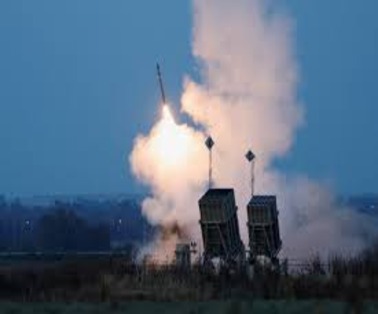As thousands of rockets have rained down on Israel, the country has been relying once again on the Iron Dome system to protect its citizens.
Key Points
- The missile defense system is one of the most important tools in Israel’s arsenal and has saved countless civilian lives over various conflicts in the last decade
- In one of the most unprecedented operations, Hamas fired more than 5,000 rockets at Israel from Gaza Strip while its militants breached its borders, killing civilians and soldiers.
- At least 1,000 people have died in the Hamas militant attack and Israel’s retaliation to the offensive.
- Hamas still managed to breach the world’s most advanced defence systems, striking some targets within the Israeli territory which resulted in one of the most serious escalations in Israel-Gaza conflicts.
What Is The Iron Dome?
- It is a short-range, ground-to-air, air defence system that includes a radar and Tamir interceptor missiles that track and neutralise any rockets or missiles aimed at Israeli targets.
- It is used for countering rockets, artillery & mortars (C-RAM) as well as aircraft, helicopters and unmanned aerial vehicles.
- The Iron Dome was deployed in 2011.
- The Iron Dome operates effectively in various weather conditions, day and night, enhancing its reliability
- It has a claimed success rate of over 90%, though experts estimate it at over 80%.
Background of the Iron Dome
- The genesis of the Iron Dome goes back to the 2006 Israeli-Lebanon war, when the Hezbollah fired thousands of rockets into Israel.
- The following year, Israel announced that its state-run Rafael Advance Systems would come up with a new air defence system to protect its cities and people.
- It was developed with Israel Aerospace Industries.
How the Iron Dome Works
The mobile air defense system is made up of 10 batteries that each carry three to four maneuverable missile launchers. Their strategic placement provides a defense barrier against rockets, mortars and drones for up to 60 square miles of populated areas
Detect
The radar identifies an incoming rocket within 2.5 to 43 miles, or 4 to 70 kilometers, from the battery and sends information about the rocket’s path to the command-and-control center.
Predict
The control center calculates the location of impact and predicts whether the rocket is going to strike inhabited areas
Assess
The system targets rockets that pose the greatest threat to urban areas and infrastructure when dealing with multiple simultaneous threats, ignoring rockets that are likely to hit unpopulated areas or the sea
Intercept
The control system connects to a launcher that fires a missile to destroy the rocket if an interception is deemed justified.
Cost of the Iron Dome
- Each battery, or the full unit, can cost over $50 million, and one interceptor Tamir missile costs around $80,000.
- In contrast, a rocket can cost less than $1,000..
The Role of the Iron Dome in Recent Attacks
- In the midst of the Hamas assault, the ‘Iron Dome’ defense system faced an overwhelming barrage of 5,000 rockets in 20 minutes.
- While it destroyed many, avoiding hundreds of casualties, some of them managed to breach the cover and hit the Israeli territory.
- Several bypassed the Iron Dome missile defence system and smashed into buildings as far as Tel Aviv.
Gaza Strip: The Source of the Attacks
- The Gaza Strip is a Palestinian exclave on the eastern coast of the Mediterranean Sea.
- It borders Egypt on the southwest for 11 km and Israel on the east and north along a 51 km border.
- Together, the Gaza Strip and the West Bank make up the State of Palestine, which has been under Israeli military occupation since 1967.
- The territories of Gaza and the West Bank are separated from each other by Israeli territory.
- Both are under the jurisdiction of the Palestinian Authority but the Strip is governed by Hamas
- The major river in Gaza Strip is Wadi Gaza, around which the Wadi Gaza Nature Reserve was established, to protect the only coastal wetland in the Strip.
Other Air Defense Systems Compared to the Iron Dome
S-400 missile system:
- Missile defence system developed by Russia.
- Capable of intercepting all missiles (long, medium & short range).
- Can intercept 5th generation fighter aircrafts, drones, cruise & ballistic missiles.
- Range: 300-400 kms.
- India has S-400 which also caters to the three threats (rockets, missiles and cruise missiles).
Terminal High Altitude Area Defense (THAAD):
- American anti-ballistic missile defense system.
- Designed to shoot down short, medium & intermediate-range ballistic missiles.
- Range: Greater than 200 km.
To Download Monthly Current Affairs PDF Click here
Click here to get a free demo
Everything About CLAT 2025



